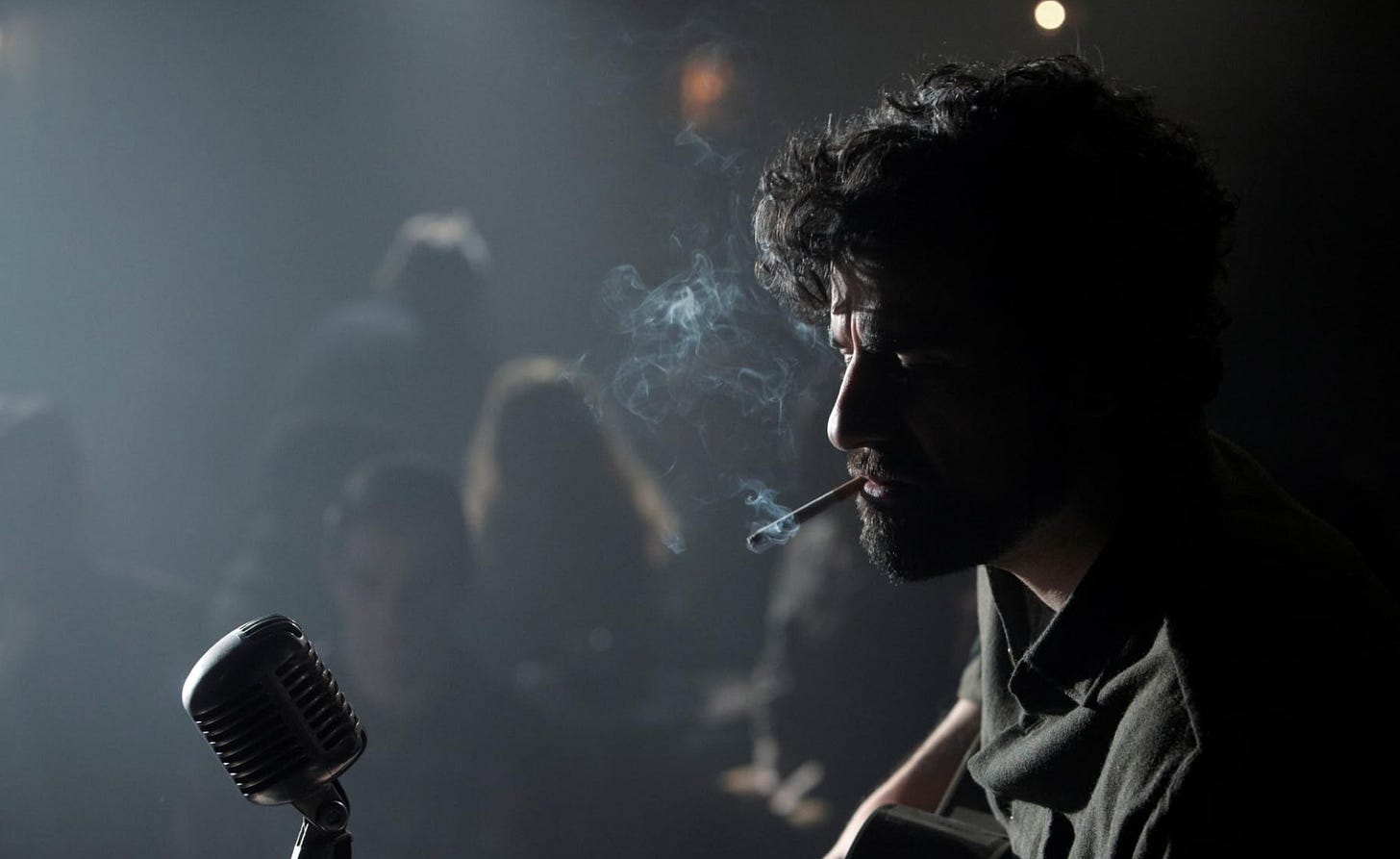‘Inside Llewyn Davis,’ the Coens’ brilliant 1960s folk meditation, turns 10
The film, featuring Oscar Isaac as a folk also-ran, was the duo’s best film this century.
Joel and Ethan Coen have made a lot of movies that featured existential despair, but none did it quite like Inside Llewyn Davis, the brothers’ examination of the downtown folk scene in New York City, circa 1961.
The film arrived in December of 2003- 10 years ago this week- and featured a great top-to-bottom cast, a story both funny and a series of heartbreaking gut-punches, and yet another brilliantly curated soundtrack by T Bone Burnett, who had put together the Grammy-winning soundtrack to O Brother, Where Art Thou three years earlier.
Is it a depressing depiction of a man’s doomed, Sisyphean task? Sure. But it was also my favorite movie of 2013, as well as of the 2010s, and I tend to rank it highly on periodic ranking-the-Coen-movies lists. (I tend to put it behind only Fargo, and sometimes A Serious Man or No Country For Old Men, depending on my mood.)
Llewyn Davis (Oscar Isaac) was based loosely on real-life folkie Dave Von Ronk. The character is what would be described, were he from a different era and female, a “hot mess.” “Like King Midas’ idiot brother,” his sometime lover Jean (Carey Mulligan) tells him.
The plot is a continuous series of disappointments and humiliations for Llewyn, both personal and professional- some of his own making, and other times due to his luck running out. When he tries to quit, he can’t even do that right- and in the end, after he seems to have a decent gig, he’s upstaged by none other than Bob Dylan.
Llewyn, even though he appears to be talented, is having little success as a folk singer, especially following the recent suicide death of his former singing partner Mike. Essentially homeless, Llewyn takes turns crashing on the couches of friends, while trying (and failing) to make a living, and also trying unsuccessfully to take care of a cat who repeatedly gets lost. In some movies, “Llewyn is the cat” might be an unstated metaphor, but in this one, it’s said out loud.
All this failure leaves him bitter and unpleasant. During one argument, he says, of his music, “This is how I pay the rent,” but he does not pay rent at all.
In the middle of the film, there’s a side trip to Chicago, featuring Coen mainstay John Goodman as a heroin-addled jazz musician, so Llewyn can meet club owner and talent manager Bud Grossman (F. Murray Abraham). It’s the kind of scene in a lot of music movies, in which the hero meets someone, plays him a song, and it changes his life. That’s not what this movie does:
The music is so great, and the Coens let most of the songs play out until the end.
Inside Llewyn Davis was Oscar Isaac’s big breakout role, but the cast goes quite deep. Goodman gives what may be his second-best performance in a Coen film. Justin Timberlake and Mulligan are a folk duo, while a then-ascendent Adam Driver has a fun small role as a cowboy singer. Driver and Isaac would go on to co-star in the Star Wars sequels, while three cast members (Driver, Alex Karpovsky, and Ethan Phillips) who were also on Girls, around the same time.
There was a big controversy, at the time, because some interpreted the scene where Llewyn crashes on the couch of a couple named the Gorfeins, to mean that they were the parents of Mike, his deceased partner. Glenn Kenny, in an essay that year, appeared to conclude that they’re not.
Inside Llewyn Davis wasn’t a huge box office draw, despite positive reviews, and its only Oscar nominations were for Best Cinematography and Sound Mixing, neither of which it won. But despite that lack of validation, the film is truly one of the best the Coens ever made.





O brother where art thou on this list
Great pick for your best of the decade.